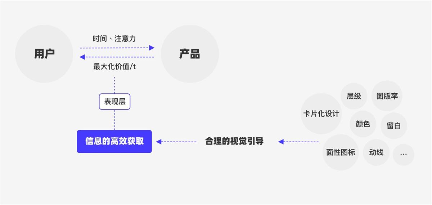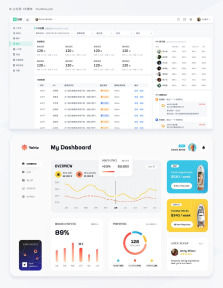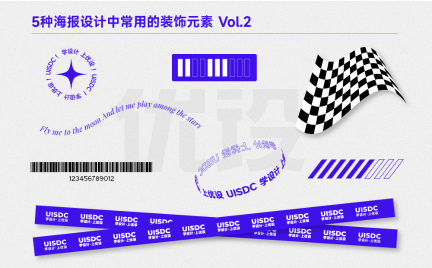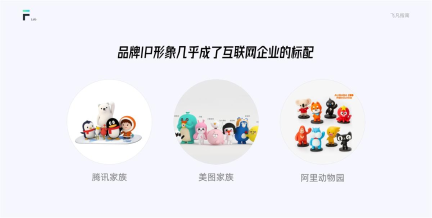Last time we talked about internationalism beginning to dominate the field of graphic design. This style takes Bauhaus modernism as its DNA, then takes shape in Switzerland, and finally is carried forward by the United States and then extended to the world.
However, we must be clear that design and artistic style are diversified at any time, but coexist in the mode of "you sing and I come on stage". The reason is that aesthetics and culture are also diverse. Usually, a certain style occupies the mainstream in a specific historical period.
Therefore, when internationalism began to run rampant in the 1950s, the United States developed another well-known graphic style, historically known as the New York school.

Member of "New York graphic design school"
We are mainly talking about Paul Rand, the leader of this school.
Because talking about the history of graphic design, Shi Tainong believes that it is difficult to bypass such a figure.

American designer Paul Roland
Paul Rand has been active in the design industry for 60 years. He once "came out of the circle" because he accepted the entrustment of Steve Jobs, the founder of apple, to design the logo of next software company. Among them, the story of "only one draft, never modify" is talked about by people in the circle.
This sign was priced at $100000 in 1986. Jobs was also very satisfied. What kind of experience created Paul's confidence and talent. Let's learn about his story today.

Next brand designed by Paul
Renamed baby face
Paul Rand was born into an Orthodox Jewish family in the United States in 1914.
His parents make a living by running a small shop. It is said that when Paul was 3 years old, he liked to copy some commodity advertisements in his parents' shop with paper and pen. Such legendary stories are basically the standard configuration of celebrities, so as to better explain the foundation of his future achievements.
Most of the information about Paul's school experience has been taken in one stroke, so it should be no different from the performance of ordinary people. Paul in his youth had a very likable baby face, which looked very friendly. Such a face became very kind and lovely in his later years.

Young Paul Rand
He has studied in several places, namely the Pratt Institute, Parsons School of design and the Art Students League of New York, for a total of about five years.
During this period, his famous mentor was the German artist George Grosz, who was once a member of the German dada school. Later, some collage forms shown by Paul in graphic design are believed to come from the influence of Grosz.

Gross and his works
In 1934, Paul began to work formally. His first job was to provide illustrations for a trade union in his hometown of Brooklyn, and then the trade union would sell these illustrations to different newspapers and magazines. Because of this, he was later "poached" by these relevant magazine companies.
An important thing he did during this period was to change his name. Paul's original name was actually "Peretz Rosenbaum", which is a typical Jewish name. As a Jew, he was in a difficult situation in the 1930s. At that time, anti Semitism was high, especially in Europe. I believe you are not unfamiliar with such a history.

Paul's illustration design
So Paul changed his name to "Paul Rand" in order to avoid unnecessary trouble caused by his Jewish identity.
This name was later regarded by later critics as a successful "brand name", because in American English, compared with the old name, Paul Rand is catchy, easy to read and remember, easy to impress, and is an easy to spread "brand name".
Unique design
Paul later became famous mainly for brand design, but in his early days, he was mainly engaged in the design of books, magazines, illustrations and advertisements.

Paul's newspaper and magazine design
Statistics show that Paul has provided design services for a series of American magazines and newspapers since he was about 23, such as master, apparel arts, glass packer, etc. at this time, he began to reflect his own unique style in relevant graphic design.

The cover of fashion art magazine designed by Paul
At that time, he was already familiar with various popular graphic styles in Europe, such as modernism led by Bauhaus, cubism across the field of art and design, Dadaism, surrealism and other schools.
However, he did not completely reproduce these styles in his work. He noticed a deeper problem, that is, graphic design needs to face all kinds of people, not only intellectuals, but also civilians. Excessive elitist artistic style or too rigid modernism are not the best choice, but should be more interesting, vivid and likable.

Paul's magazine cover
His idea has a lot to do with his presence in American society. As a new country composed of immigrants, the United States has two major characteristics in cultural tone:
First, pragmatism, which we have repeatedly said before, pays attention to real value. The second is the character of the general optimist. If you have American friends around you, they may have feelings. They are often very cheerful, especially easy to laugh, and the people around you will be happy.
The reasons for the formation of these two cultural characteristics are difficult to investigate and left to be supplemented by other friends, but in this way, they highlight a tendency to pursue a sense of humor in graphic design.

Paul's lively graphic design
Therefore, in order to make his graphic design popular in the United States, Paul Roland reflects a lively, eye-catching and joking feature, which is embodied in the application of simple and humorous symbolic graphics, smooth and free hand-painted elements and appropriate collage form.
According to Shi Tainong's understanding, his design personality belongs to a complete internalization of European popular style. Cubism, Dadaism and modernism are absorbed by him like vitamins. Among them, we can also find the simple but inclusive expression of German "placastil".

German "poster style" graphic design
Paul is in the current of the times, but he doesn't want to be led by the public. At that time, internationalism derived from Swiss graphic style has gradually become very strong in the United States, but he believes that such style is only a form of design expression and should not be the only form.
In addition to the features mentioned above, Paul's graphic design also makes people feel that "the layout is very bold", which is actually very prominent. We are often shocked by some of his jumping layout arrangements, and we can't imagine that the elements can be arranged in this way.

Paul's layout style
This is an expression of "the courage of the artist". Paul's seemingly random design actually has profound logical considerations, and there is a "order" different from the type of internationalism, which is harmonious, novel and strong visual impact.
This style has become a basic design tone of "New York graphic design school".
The period from 1941 to 1954 belonged to Paul's advertising design period. At this stage, he worked for the Weintraub advertising agency in the United States, from advertising designer to art director.

Paul in middle age
This choice is related to the times, because the advertising industry began to flourish in the United States after the war. As it is now, we have also experienced the changes that advertising design, web design and UI design have become the main publicity materials of enterprises in turn, including the update and switching of design software and popular style.
During Paul's advertising design period, he designed many successful advertisements for a series of large American companies at that time, such as the promotion advertisement of ohrbach's department store and the product advertisement of Italian olivetti Corporation.

Paul's promotional advertisement for ochbach department store
These works won him a reputation in the industry. At this time, corporate image design began to rise again. He left the advertising company at the age of 40 in 1954 to start a business. The design focus shifted from advertising plane to brand design, starting the second spring of his career.
Brand design career
The brand vision system (VI) we are familiar with now is actually not enough for 100 years. Shi Tailong will have a special chapter on this history later. This time, we first learn from Paul's story. He is an important participant in this history.

Paul designed an advertisement for the olivetti Typewriter Company
In addition to public welfare activities and government publicity, the main social function of graphic design is to cooperate with marketing. In the past, it was generally reflected in posters, books and magazines, as well as supporting product materials.
After World War II, due to the internationalization needs of large enterprises, we found that the systematic design of brand image is very important. Its advantages are reflected in visual recognition, systematic design and accumulation of brand assets.
In fact, Paul has done a lot of brand design during the advertising period. He is an early designer engaged in this exploration. In 1946 (there are several statements about this year), he published a collection of cases containing design ideas called thinking design.

Book thinking about design
It includes many enterprise brand designs, but this design belongs to the primary stage of brand system development. For example, it focuses on logo, and the system is not good. However, after several years of fermentation, this book is enough to win the trust and recognition of the market. If he dares to be the first, he can often win the dividend of a new runway.
When he started his own business, he soon received many brand image design commissions from large American enterprises, such as IBM, the Westinghouse Electric Corporation, United Parcel Service, American Broadcasting Company, etc. these cases have been highly praised by customers and the society.

Paul's brand design
Let's take IBM as an example. In fact, there are many articles on the Internet to tell this story, but most of them have the problem of year confusion. Shi Tailong's story is based on the information on Paul Rand's official website of the United States.
First of all, IBM's main business at that time was commercial machinery, and it had occupied an important advantage in the field of computer production.
The logo of IBM has been modified three times in Paul's hands. For the first time in 1956, Paul further optimized its font. The prototype was from the German designer George Trump (Georg Trump), a city called City Medium with a thick, decorative and elegant font.

Design in 1956
An important application feature of this logo designed by Paul is that the basic image remains unchanged, but it has a variety of forms, such as stroke, solid, different stroke thickness, with box bottom color, with box bottom color anti white, etc.
Paul's statement is that different departments are allowed to use it freely according to their needs. Now we are used to making VI for multiple combinations of logos, but at that time, such an idea was advanced, and it was very difficult to grasp the "degree" of change. If the logo remains unchanged or changes indiscriminately, there will be a serious problem of "rollover" of brand design.
This logo is accompanied by a "manual for easy use". For example, the font is standardized, the logo is used in different formats, and there are demonstration renderings. The booklet is constantly updated and enriched. By the 1960s, it developed into IBM design guide. Such a manual is equivalent to the basic form of modern VI manual.

IBM branded materials
Paul's design consideration effectively controlled the "random operation" in the daily design of the enterprise, and played a good and far-reaching role in the global promotion of IBM brand.
The second modification was in 1965, which was divided into 13 "bars" (positive and negative graphics) on the basis of the original logo. The third modification was in 1970, which changed 13 "bars" to 8. The reason is not discussed due to space. You can understand it by yourself.

IBM logo changes
To be sure, Paul's brand design seems ordinary and even ugly, but in fact, it has very persuasive underlying logic and can solve some big problems.
In this regard, you can search the relevant videos when jobs commissioned him to design the "next" brand on the Internet. In the video, Paul has a humorous and capable eloquence, and what impressed Shi Tainong most is a relevant memory of jobs:
Paul told jobs: the professional problem of design is my consideration, and whether to use it after the design is your consideration. The cost can't be less.

Jobs wore a T-shirt with the next logo
That's all for today's story. Thank you. Goodbye next time!
Welcome to the WeChat official account of the author, "design history too strong":










